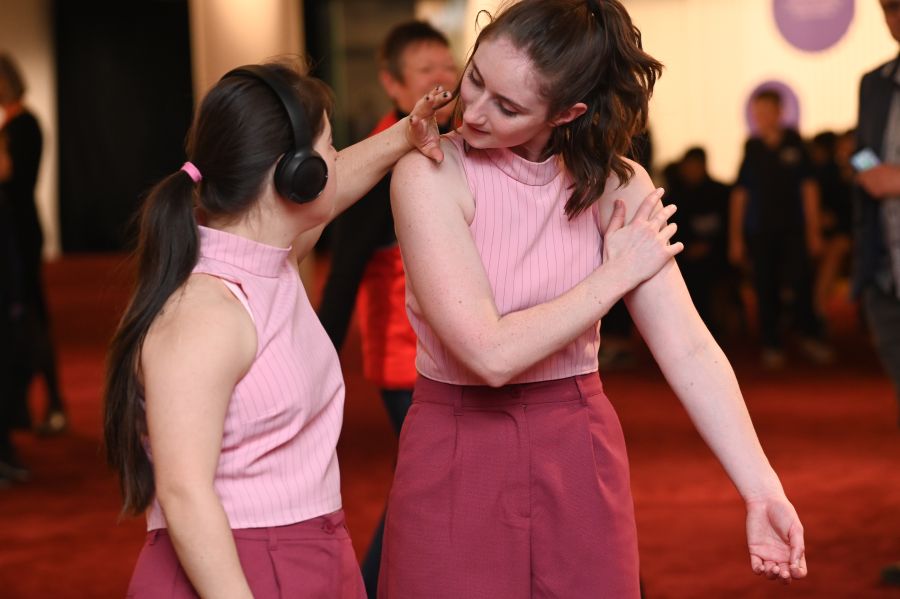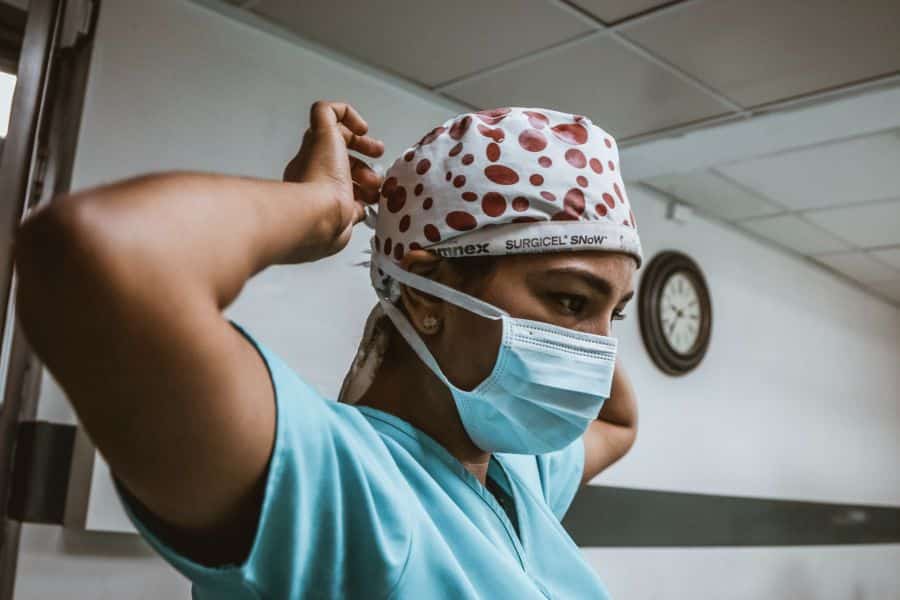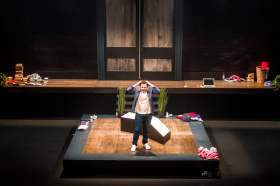As sites of both trauma and healing, hospitals can be strange and sometimes unsettling places.
Such institutions are where some of life’s most complex journeys play out, both physical and emotional. Unsurprisingly, art has proved an effective way of supporting people through these challenging times.
The benefits of art in hospitals are not hard to find. It might be that the building’s architecture reflects ideas of creative therapeutic design (Perth Children’s Hospital and Monash Children’s Hospital are recent examples) or they could be facilitating high quality arts programs to assist patients’ recovery.
If properly supported, such initiatives can flourish as permanent fixtures within healthcare communities, offering patients important benefits and providing sustainable career paths for artists in specialist areas.
But since COVID, both hospitals and the arts have faced unprecedented challenges and reached worrying points of crisis.
Hospitals have been pushed into overdrive under stretched conditions, while some parts of the arts sector (especially live performance) have been reeling from revenue losses and reduced opportunities to present work.
It’s at this juncture that Flinders Medical Centre’s Arts in Health program in Adelaide is seeking to forge both new arts experiences for patients and new opportunities for performing artists.
One of Australia’s longest running arts health programs
Flinders Medical Centre’s Arts in Health program is one of the country’s most prominent examples of the arts as an intrinsic part of hospital patient care.
Established in the 1990s as part of a health promotion strategy, it expanded in the 2000s with the support of then SA Health Minister, John Hill, who witnessed one of program’s artist-in-residence projects transform an in-patient’s treatment in a remarkable way.
As Arts in Health Manager Stacey Baldwin describes: ‘There was an artist in the hospital at the time. She was working on a site responsive work – a mural. She was wearing a wedding dress and painting to the sounds of cello music.
‘A patient who was very sick, and who was not responding well to treatment, was being wheeled in past this scene and they started gazing at the artist at work.
‘The artist offered a paintbrush to the patient and they started painting the mural together,’ Baldwin continued.
After participating in that experience, the patient’s recovery completely transformed.
Stacey Baldwin, Manager, Arts in Health
The fact that the SA Health Minister was there to see this unfold gave him sharp insight into what artists in hospital settings can achieve, and is an experience he has since often referred to in his ongoing advocacy for the arts in healthcare settings.
The Flinders Hospital arts program is now funded through the Medical Centre itself (via SA Health) as a trusted service for a range of their Allied Health patients.
Growing demand for Arts in Health
Since COVID, Arts in Health has seen significant increases in demand for its work which their small team (six artists in total) has been unable to meet.
Baldwin explained: ‘In some weeks we have not been able to see 85% of the patients who want to engage with the program.
‘Our program is built around patient autonomy. So, we only see them if they ask for us, and many of them really want to see us,’ she said.
To cater to these growing requests, last year Baldwin applied for an Arts South Australia Arts Recovery Fund grant to fund a new Arts in Health project in partnership with Restless Dance Theatre.
Based on Restless’s intimate performance work Ecoute Pour Voir/ Listen to See, the project will see a small group of the company’s performers work with Arts in Health’s artists to present their one-on-one performances to as many as 100 patients at Flinders Hospital over three days later this month.

Baldwin, who is from a performing arts background, says the choice to partner with Restless was based on what she sees as their performers’ abilities to bond with their audiences.
‘I know how well they connect with people through their work,’ Baldwin told ArtsHub.
‘Artists in hospital settings need very high levels of empathy, and they need to be able to read people exceptionally well, she continued.
‘It’s obvious to me that the Restless performers have those skills, and they have the right personality to undertake this work.’
A new avenue for performers
Michelle Ryan is Artistic Director of Restless Dance Theatre, and as an artist living with multiple sclerosis has had her fair share of hospital experiences.
She says these encounters have helped shape her views on how art can help in these contexts.
‘I think there is such an opportunity here [for artists] to bring something special to someone who is potentially going through something difficult, and allow that person to remember their importance and relevance, because they are connecting with that artist who is there just for them in that moment in time,’ she said.
Read: How stand-up comedy is helping cancer patients tell their stories
Ryan said Restless’s upcoming performances at Flinders Hospital have a clear range of benefits for the artists as well.
‘They are providing employment opportunities for them, enhancing their career pathways, and giving them greater visibility amongst the public.’ she said.
‘Our artists value every opportunity they have to perform, so for them to be able to do their solos for six different people, or in six different settings in one day – that’s really exciting.’
Remembering art’s intrinsic value
Researcher and Senior Lecturer in Creative Industries at Flinders University, Tully Barnett, is also encouraged by the pathways Arts in Health projects provide for artists.
She says ‘the evidence is clear and longstanding that they offer important benefits for artists as well as for health organisations, and of course participants and patients.’
But Barnett is also aware of the potential risks these kinds of direct-benefit arts activities could pose to perceptions of the arts’ broader value to society.
Read: New Minister to end attacks on the arts
‘One thing we need to be careful of is that we don’t instrumentalise the work of the arts in the process,’ Barnett told ArtsHub.
‘We don’t want to just value that arts work because of the health or social benefits, or economic benefits it generates, but rather continue to value the important work of artists as art.’
This concept of the multi-faceted and complex nature of art’s value to its audiences is perhaps on the minds of many in the sector right now, as they prepare submissions for the Federal Government’s long-awaited new National Cultural Policy.
As a key document outlining the guiding principles and resources required to steer a sustainable arts over the next decade, it will be interesting to see how inter-industry programs like Arts in Health, and the role of artists’ in these interdisciplinary contexts will be acknowledged in this important long-term vision for the Australian arts sector.
Tully Barnett, Stacey Baldwin and Michelle Ryan will speak on these and related themes as part of APAM’s upcoming WIRE webinar series’ Arts in Health: New Opportunities for Collaboration panel discussion on Tuesday 12 July. Register here.





